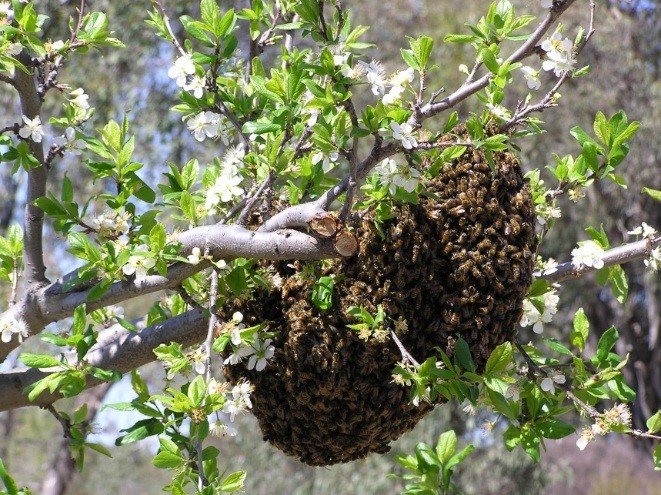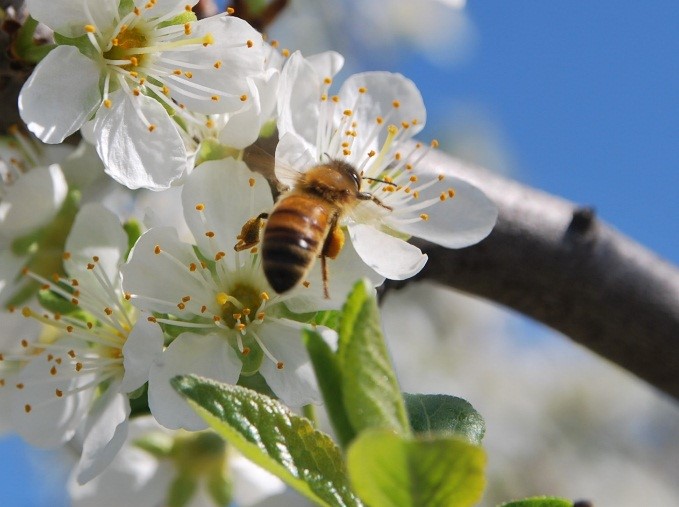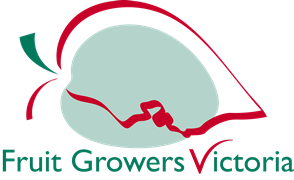
Over the past few days, the temperatures have been perfect for bees, which like to forage between 19 and 30 degrees Celsius in our orchards in full bloom. Honey bees, which live in colonies (swarms can be seen at this time of the year like on the photo) play a critical role in setting viable flowers. The weather conditions have also been favourable to bugs that we do not necessarily want to see, and which may, at this key flowering stage, require a form of spray control.
There is a dilemma to resolve as the insecticide(s) we may want to apply to control aphids or other detrimental insects may also impact on bees. What can be done to minimise the disruption to the bee’s activity and health?

1.Look carefully in your orchard to evaluate insects’ activity: you will see a combination of European honeybees, characterised by these little yellow sacs of pollen they store on their back legs before going back to the hive, and also some native bees (Australia has actually over 1500 sorts of native bees). Most of them are solitary and not efficient pollinators for our Victorian orchards’ pollination.
2.Evaluate the threat posed to your orchard by other insects at the time when bees are pollinating.
For example Black Aphids are the most likely to be seen now. What are your options?
Remember that bees can be poisoned by insecticides in many ways, including:
- When a chemical is applied directly to a flowering crop while bees are foraging.
- When a chemical is applied to a crop that is flowering, and bees subsequently forage on contaminated nectar, pollen, water.
- When a chemical is applied to a crop not in flower, but is also applied to non-target plants that are flowering at the same time.
- When pesticide drifts onto bees, hives or the bees’ water source.
3.Understand the selection of chemicals used for the threatening insect. Your first strategy should be to consider spaying when the bees are not active, ie at night, and to select a chemical with low residue persistence. If you intend to spray a systemic insecticide, make sure you understand the impact on honeybees. Some recent publications readily available on the internet include:
Honeybee Pesticide Poisoning – a risk management tool for Australian farmers and beekeepers is available for download (for free!) at: https://ridc.infoservices.com.au/items/12-043.
Also see the Primefact 149, written by Dr Douglas Sommerville, NSW bees specialist : “Pesticides – a guide to their effects on honey bees”.
The subject of neonicotinoids use in and around flowering fruit trees is the subject of considerable studies and concerns: the European Food Safety Authority has recently concluded that “Neonicotinoids applied as foliar sprays pose a threat to bees”. This article dated 26/8/2015: http://www.efsa.europa.eu/en/press/news/150826 gives an insight of the future of these chemicals in our country.


